
Himself
This distinctly personal journey into the artistic possibilities of independent film is not to be missed. Jonas Mekas, Jean-Pierre Gorin, Robert Kramer and many other visionaries and mavericks of the silver screen – as well as a book seller, a critic and a psychoanalyst – discuss what cinema has meant to them, what it is and what it could be and, implicitly, how it has changed over the 18 years in which this film was shot. Director Boris Lehman leads the charge, drawing in moments of absurdist humour and inventive camera work; he keeps things raw and spontaneous. His encounters with the now much-missed Jean Rouch and Stephen Dwoskin are particularly touching and stand testament to their personal playfulness and candour. An engaging, absorbing, epic odyssey of a movie.

Himself
This documentary interweaves celluloid and voice recordings by Maya Deren, and colleagues who knew her firsthand: Jean Rouch, Jonas Mekas, Alexander Hammid, Cecile Starr etc. Maya Deren (1917-1961) was an experimental filmmaker. In the 1940s and 1950s she made several influential avant-garde films, such as Meshes of the Afternoon (1943). Images from this and her other work are used in this documentary. You can also hear her voice, as well as accounts by contemporaries such as Jean Rouch and Jonas Mekas.

This portrait of the French film theorist and avant-garde director Jean Epstein (1897-1953) concentrates on the period when he filmed in Brittany, the spot where he became inspired by the sea. Using rare archive footage, Jean Epstein, Young Oceans of Cinema also looks at Epstein’s views on the specificity of the film medium.

Self
The Midnight Sun Film Festival is held every June in the Finnish village of Sodankylä beyond the arctic circle — where the sun never sets. Founded by Aki and Mika Kaurismäki along with Anssi Mänttäri and Peter von Bagh in 1985, the festival has played host to an international who’s who of directors and each day begins with a two-hour discussion. To mark the festival’s silver anniversary, festival director Peter von Bagh edited together highlights from these dialogues to create an epic four-part choral history of cinema drawn from the anecdotes, insights, and wisdom of his all-star cast: Coppola, Fuller, Forman, Chabrol, Corman, Demy, Kieslowski, Kiarostami, Varda, Oliveira, Erice, Rouch, Gilliam, Jancso — and 64 more. Ranging across innumerable topics (war, censorship, movie stars, formative influences, America, neorealism) these voices, many now passed away, engage in a personal dialogue across the years that’s by turns charming, profound, hilarious and moving.

Self
Belgian filmmaker Eric Pauwels' meditation on dream, travel and film.

Lui-même

Lui-même

Self

Himself

Inspired by the life of the french-born photographer and ethnographer, Pierre Verger, the movie follows his journey between Bahia, Brazil and Benin, Oriental Africa, showing places and people he met and his life study project: the Candomblé culture.

Narrator
A documentary cycle involving the Rarámuri or Tarahumara people of Northern Mexico. This film addresses rites of winter as well as peyote and bakaka rites. Its commentary, read by Raymonde Carasco and Jean Rouch, is drawn from texts by Antonin Artaud.

Cinematography
Two parts magical drama and one part straight documentary, this outing from famed ethnographic filmmaker Jean Rouch is set somewhere in Nigeria near a small village.

Director
Two parts magical drama and one part straight documentary, this outing from famed ethnographic filmmaker Jean Rouch is set somewhere in Nigeria near a small village.

Director
This film, made in one afternoon, is an "inspired promenade," the discovery of an exhibition with improvised text and commentary. Five shot sequences of ten minutes apiece, following the chronological order of the history of cinema as conceived by Henri Langlois thirty years ago. Two weeks later, the Musée was devastated by a fire at Palais de Chaillot. It is thus the final testament, full of emotion and passion, of the last masterwork of Henri Langlois.

"Enjoying an old port wine together, I was talking with Manoël about the bridges of Douro, and immediately we were of the same opinion: of all these bridges, the great work of art in the capital of modern architecture is the bridge that Gustave Eiffel had done before building his tower of Paris. In less than five minutes, the project was constructed: Manoël was writing a poem that we will film with our friends Bernard, Jérôme, and François. And our dreams of childhood were made in less than a week by going back and forth to the banks of Douro, on foot, then by car, then in a helicopter, back to where we were following these marvelous clouds, with Manoël and me screaming stanzas of a poem inspired by the wind, the water, and friendship." - Jean Rouch

Director
"Enjoying an old port wine together, I was talking with Manoël about the bridges of Douro, and immediately we were of the same opinion: of all these bridges, the great work of art in the capital of modern architecture is the bridge that Gustave Eiffel had done before building his tower of Paris. In less than five minutes, the project was constructed: Manoël was writing a poem that we will film with our friends Bernard, Jérôme, and François. And our dreams of childhood were made in less than a week by going back and forth to the banks of Douro, on foot, then by car, then in a helicopter, back to where we were following these marvelous clouds, with Manoël and me screaming stanzas of a poem inspired by the wind, the water, and friendship." - Jean Rouch

Self
You're a provincial kid in Paris and suddenly you're the center of attention: Movie stars, famous directors and sexy women are doting on you because they all think you're the son of their long-dead legendary friend. You never knew your dad, but the facts of this famous guy's life suggest that he might have fathered you. Your mom tells you nothing. All the fuss makes you uncomfortable at first but soon you find it's rather fun to be the son of the famous Gascogne. And in the midst of it all you fall in love. It is, after all, springtime in Paris.

himself
Malian filmmaker and New York University professor, Manthia Diawara critiques visual anthropology through the work of Jean Rouch.

Director
"Their land drought-stricken, three Nigerien farmers (and their donkey) travel to Holland to investigate the possibility of importing windmill technology for use on the plains of Niger. A follow-up to JAGUAR, PETIT À PETIT, and COCORICO MONSIEUR POULET! – undertaken with his longtime filmmaking partners Damouré Zika, Lam Ibrahima Dia, and Tallou Mouzourane – Rouch’s feature is a surreal tale of mythic proportions, full of antic humor and poetic digressions. But beyond the laughs and reveries, MADAME L’EAU is also a poignant commentary on the ‘poisoned gifts’ brought to West Africa by development projects. As Faye Ginsburg once remarked, this is a film about what the world would look like “if Jean Rouch was the president of the World Bank.”" - Anthology Film Archives

Director
When the male nurse Damouré Zika talks about AIDS with his two friends Lam and Tallou, under the admiring eye of his own wife Lobo, who is a nurse's aide, it is because he believes that AIDS is a "disease of love that can only be conquered by love." And this right to love has only one passport for the moment: the condom, on whose use he gives an incredible demonstration.

Self
An intimate window into one of the great movements in film history that brought about an evolution in the art of cinema. The documentary portrays the movement with insight on the lives and works of Jean-Luc Godard, François Truffaut and other principal players in the New Wave.

Himself
This film is a moving tribute to French filmmaker Jean Rouch. Pauwels, a former collaborator of Rouch, accompanies him on a trip to Japan. In this cinematic letter, which he himself calls “a journey into the memory”, Pauwels philosophises about the essence of cinema and, consequently, of life.

A male diva sings in a countertenor voice while massacring chickens brought to him by his butler, Jean Rouch, until a slave provides proof of his love for the chicken, which he has tucked under his arm. A film-opera based on a poem and musical theme by Rina Sherman.

Himself
The first film in Jean Rouch's filmography is not his first film at all. It was edited by a French news company, using images he had shot but organised into a very different sequence from his own. On top of that, it was accompanied by a colonialist commentary said by a sports reporter! As we watch, Jean Rouch ad-libs a new commentary more in keeping with his images, and so, in 1991, he finally finishes his first film! - Dominique Dubosc

Director of Photography
Collaborative experimental project on which three director made different films about the Swedish icebreaker "Frej".

Editor
Collaborative experimental project on which three director made different films about the Swedish icebreaker "Frej".

Writer
Collaborative experimental project on which three director made different films about the Swedish icebreaker "Frej".

Director
Collaborative experimental project on which three director made different films about the Swedish icebreaker "Frej".

Director
On the occasion of the bicentenary of the French Revolution, a group of Haitians in Paris undertake a voodoo ritual in front of Les Invalides, to reconcile the spirits of Napoleon Bonaparte and Toussaint L’Overture, the Haitian revolutionary who died as a prisoner of the French Emperor.

Director
A Film by Jean Rouch and Tam-Sir Doueb.

Director
Ham, son of Noah, was damned for seeing his father naked: his descendants were condemned to serve Shem and Japheth, the "good" sons of Noah. Cush, son of Ham, is the forefather of black people. His sons will carry the curse of Ham throughout the history of slavery. Rouch adapts the text of Julius Amédé Laou, a delusional dialogue between two women.

Writer
First part of the collaborative project "Brise-Glace" showing the diverse travels on the icebreaker "Frej". Directed by Jean Rouch.

Editor
First part of the collaborative project "Brise-Glace" showing the diverse travels on the icebreaker "Frej". Directed by Jean Rouch.

Director of Photography
First part of the collaborative project "Brise-Glace" showing the diverse travels on the icebreaker "Frej". Directed by Jean Rouch.

Director
First part of the collaborative project "Brise-Glace" showing the diverse travels on the icebreaker "Frej". Directed by Jean Rouch.

Director
Mariama and Damouré, two cousins, are in Venice looking for a relic—or fetish—lost a long time ago, as in one of Gentile Bellini’s famous paintings. Moving from the Grand Canal to the Niger River, the two mischievous cousins reveal to us that the relic is none other than the ritual ax of Dongo.

Director
Not much film stock, an inspired camera, a meditation on time, period songs: using contemporary images, shot at a time when the broken city was starting to heal its wounds, Jean Rouch recalls his impressions in Berlin immediately after the war.

Director
An artist is invited to Turin and is asked to do a painting inspired by the city and the work of Giorgio De Chirico.

Director
Dionysos is a 1984 French comedy film directed by Jean Rouch, starring Jean Monod and Hélène Puiseux. It tells the story of an American drama teacher who after writing a thesis on Dionysus tries to combine Dionysian rites with the work at a car factory, in an attempt to create the world's first car built in joyous frenzy.

Director of Photography
A fortuitous meeting, late one afternoon, in the garden of the Tuileries, of one or two cameras, a tape recorder, and three cameramen/directors, Raymond Depardon, Jean Rouch, and Philippe Costantini.

Director
A fortuitous meeting, late one afternoon, in the garden of the Tuileries, of one or two cameras, a tape recorder, and three cameramen/directors, Raymond Depardon, Jean Rouch, and Philippe Costantini.

himself
A fortuitous meeting, late one afternoon, in the garden of the Tuileries, of one or two cameras, a tape recorder, and three cameramen/directors, Raymond Depardon, Jean Rouch, and Philippe Costantini.

Three pioneers of documentary filmmaking – Joris Ivens, Henri Storck, and the man behind the camera, Jean Rouch – recall the early days of the documentary genre and speak about their creative methods and sources of inspiration. This lively discussion between the directors is shot in cinéma vérité style and spliced with footage from their older films.

Cinematography
Three pioneers of documentary filmmaking – Joris Ivens, Henri Storck, and the man behind the camera, Jean Rouch – recall the early days of the documentary genre and speak about their creative methods and sources of inspiration. This lively discussion between the directors is shot in cinéma vérité style and spliced with footage from their older films.

Director
Three pioneers of documentary filmmaking – Joris Ivens, Henri Storck, and the man behind the camera, Jean Rouch – recall the early days of the documentary genre and speak about their creative methods and sources of inspiration. This lively discussion between the directors is shot in cinéma vérité style and spliced with footage from their older films.

Director
Sigui 1967-1973: invention de la parole et de la mort is a never-before-seen synthesis of the roaming ceremony of the Dogon people living in Mali, the Sigui. It is celebrated for seven years every sixty years, and it is to commemorate the first forefather’s death and funeral and the bestowal of speech to humans.

Director
In 1972, the Dogon of the Bandiagara cliff in Mali celebrated the funeral of Anaï Dolo, head of the Bongo Masks Society, who died at the age of 122. On this occasion, the large Bongo mask, is erected and for twenty days, family members, elders, men from neighbouring villages purify the village.
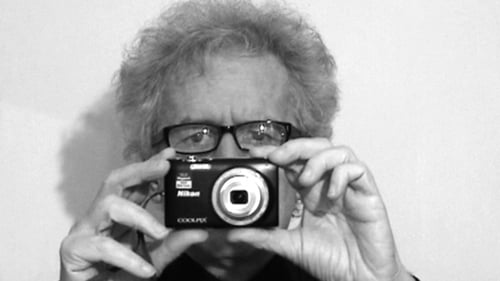
N°1256
Cinématon is a 156-hour long experimental film by French director Gérard Courant. It was the longest film ever released until 2011. Composed over 36 years from 1978 until 2006, it consists of a series of over 2,821 silent vignettes (cinématons), each 3 minutes and 25 seconds long, of various celebrities, artists, journalists and friends of the director, each doing whatever they want for the allotted time. Subjects of the film include directors Barbet Schroeder, Nagisa Oshima, Volker Schlöndorff, Ken Loach, Benjamin Cuq, Youssef Chahine, Wim Wenders, Joseph Losey, Jean-Luc Godard, Samuel Fuller and Terry Gilliam, chess grandmaster Joël Lautier, and actors Roberto Benigni, Stéphane Audran, Julie Delpy and Lesley Chatterley. Gilliam is featured eating a 100-franc note, while Fuller smokes a cigar. Courant's favourite subject was a 7-month-old baby. The film was screened in its then-entirety in Avignon in November 2009 and was screened in Redondo Beach, CA on April 9, 2010.

Director
Jean Rouch filmed this loving and humorous portrait of anthropologist and filmmaker Margaret Mead in September 1977 while he was a guest of the first Margaret Mead Film Festival. As both a friend and colleague, Rouch reveals a glimpse of the legendary Mead in her later years.

Director
On the occasion of the bicentenary of the French Revolution, a group of Haitians in Paris undertake a voodoo ritual in front of Les Invalides, to reconcile the spirits of Napoleon Bonaparte and Toussaint L’Overture, the Haitian revolutionary who died as a prisoner of the French Emperor.

Narrator
The adventures of a legendary hero who, dazzled by the beauty of a princess in the hand asks. This imposes several trials he emerges victorious. Only death will eventually bring the two young men.

Director
Jean Rouch’s camera follows his friend, filmmaker/actor/critic Farrokh Ghaffari, as he walks and talks us through the famous Shah Mosque in Esfehan. While guiding him and answering his questions, Ghaffari makes Rouch discover the beauties of the architecture of the mosque and its impact on the city. Throughout the tour, they discuss Islam’s complex relationship with death, sex and cinema.

Lui-même
Jean Rouch’s camera follows his friend, filmmaker/actor/critic Farrokh Ghaffari, as he walks and talks us through the famous Shah Mosque in Esfehan. While guiding him and answering his questions, Ghaffari makes Rouch discover the beauties of the architecture of the mosque and its impact on the city. Throughout the tour, they discuss Islam’s complex relationship with death, sex and cinema.

Director of Photography
Once upon a time, in the middle of the last century, a great warrior named Babatou. Nigerian jumper from the region Dounga Gurunsi invaded the country and settled there. The brave prisoners were integrated into the army, women espoused. For fifty years, the adventurous young people from Niger Babatou went to live in the epic.

Director
Once upon a time, in the middle of the last century, a great warrior named Babatou. Nigerian jumper from the region Dounga Gurunsi invaded the country and settled there. The brave prisoners were integrated into the army, women espoused. For fifty years, the adventurous young people from Niger Babatou went to live in the epic.

Director
In February 1974, Pam Sambo Zima, the oldest of the priests of possession in Niamey, Niger, died at the age of seventy-plus years. In his backyard, the followers from the possession cult symbolically break the dead priest's ritual vases and cry for the deceased while dividing up the clothes of the divinities.

Writer

Director

Writer
The story follows three poultry sellers on a trip across the bush, attempting to deliver a load of chickens to a market in Niamey.

Director
The story follows three poultry sellers on a trip across the bush, attempting to deliver a load of chickens to a market in Niamey.
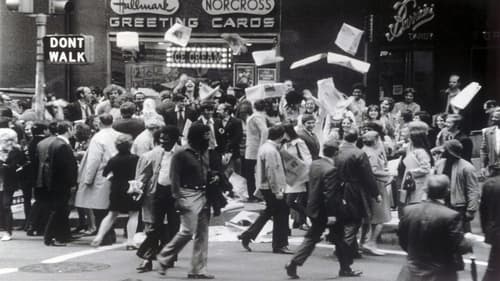
Co-Director
The film narrates a utopian abandonment, consensual and festive of the market economy and high productivity. The population decides on a number of resolutions beginning with "We stop everything" and the second "After a total downtime will be revived-reluctantly-that the services and products including lack will prove intolerable. Probably: water to drink, electricity for reading at night, the TSF to say "This is not the end of the world, this is an 01, and now a page of Celestial Mechanics". The implementation of these resolutions is the first day of a new era, Year 01. The Year 01 is emblematic of the challenge of the 1970s and covers such diverse topics as ecology, negation of authority, free love, communal living, rejection of private property and labor.

Director
It's the final of the giraffe football world championship. The 403 and the 504 are in the final. The referee gives the instructions and the cars rush in pursuit of the giraffe.

Director
A man rides a VW Beetle through the plains of Niger.

Director
A film about a lion.

Director
The title of this film translates literally as 'to put on a hori,' a hori being the Songhay term for ceremony of festival. Here it is used to refer to a ganandi, literally 'to make dance' This film concerns two women whom the zima [priest] had diagnosed some months before as being ill through possession by spirits. In the meantime, their families have gathered together the resources to pay for the musicians, dancers, and the priest himself to put on an initiation dance lasting seven days This is a film of documentation, simply recording various moments in the progress of the ceremony, without any form of explanation, neither in intertitle cards nor in voice-over. (Paul Henley, The Adventure of the Real)

Cinematography
"Tourou et Bitti", an eight minute documentary concerning a ritual in Niger, is yet another example of Rouch's excellence in creating documentaries which surpass the conventional documentary format. Just as frightening and fascinating as "Les maîtres fous", this one goes straight into the roots of ancient African cultures, in which music has an hypnotic effect, being at the same time an exorcism and a public show. Both the female and the male dancers are almost deities about to be unleashed... Spectral and humanitarian.

Writer
"Tourou et Bitti", an eight minute documentary concerning a ritual in Niger, is yet another example of Rouch's excellence in creating documentaries which surpass the conventional documentary format. Just as frightening and fascinating as "Les maîtres fous", this one goes straight into the roots of ancient African cultures, in which music has an hypnotic effect, being at the same time an exorcism and a public show. Both the female and the male dancers are almost deities about to be unleashed... Spectral and humanitarian.

Director
"Tourou et Bitti", an eight minute documentary concerning a ritual in Niger, is yet another example of Rouch's excellence in creating documentaries which surpass the conventional documentary format. Just as frightening and fascinating as "Les maîtres fous", this one goes straight into the roots of ancient African cultures, in which music has an hypnotic effect, being at the same time an exorcism and a public show. Both the female and the male dancers are almost deities about to be unleashed... Spectral and humanitarian.

Writer
An African travels to Paris to learn about the construction of tall buildings, but is soon taken up with the oddities of French life.

Director
An African travels to Paris to learn about the construction of tall buildings, but is soon taken up with the oddities of French life.

Director
About an African mother suckling her two year old child.

Director
Documentary short directed by Jean Rouch.

Director of Photography
Etnographic documentary about lion hunting in Africa.

Director
Etnographic documentary about lion hunting in Africa.

Director of Photography
Jaguar, a kind of road movie on foot, tells of the journey of three friends, Damouré, Lam and Illo, on their way to the Gold Coast where they hope to make a fortune in order to return to their village in a few months.

Director
Jaguar, a kind of road movie on foot, tells of the journey of three friends, Damouré, Lam and Illo, on their way to the Gold Coast where they hope to make a fortune in order to return to their village in a few months.

Collective contribution to a history of cinema, this issue of the “Civilisations” collection also takes part in the genesis of Deux ou trois choses que je sais d'elle and La Chinoise
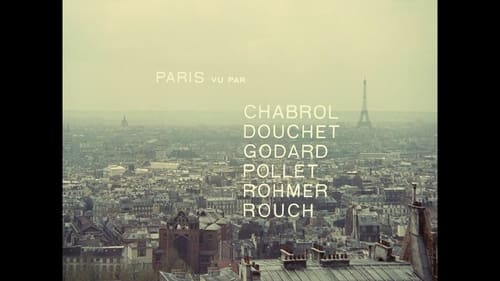
Writer
Six vignettes set in different sections of Paris, by six directors. St. Germain des Pres (Douchet), Gare du Nord (Rouch), Rue St. Denis (Pollet), and Montparnasse et Levallois (Godard) are stories of love, flirtation and prostitution; Place d'Etoile (Rohmer) concerns a haberdasher and his umbrella; and La Muette (Chabrol), a bourgeois family and earplugs.

Director
Six vignettes set in different sections of Paris, by six directors. St. Germain des Pres (Douchet), Gare du Nord (Rouch), Rue St. Denis (Pollet), and Montparnasse et Levallois (Godard) are stories of love, flirtation and prostitution; Place d'Etoile (Rohmer) concerns a haberdasher and his umbrella; and La Muette (Chabrol), a bourgeois family and earplugs.

Director
The film shows the members of a voluntary association of young people from Upper Volta who work in Abidjan, Ivory Coast - first at their work, then at a reunion that ends on a dance floor in Treichville. The young people who come to work in Abidjan often form spontaneous associations for mutual help and entertainment, which are called "Goumbés" in Ivory Coast, after the name of a square drum that serves as the rhythmic base to their dance. During a general meeting, the secretary of the association reads the statutes, and it is these statutes that serve as both the backdrop and the commentary of the film.

Screenplay
In a busy, noisy neighborhood, a frustrated young wife in a failing marriage is offered her freedom by her indifferent husband, but has second thoughts after meeting an intriguing stranger.

Director
In a busy, noisy neighborhood, a frustrated young wife in a failing marriage is offered her freedom by her indifferent husband, but has second thoughts after meeting an intriguing stranger.

Director
One of four film sketches on the problems of adolescents facing the adult world in the 1960s. The three other sketches were directed by Michel Brault, Hiroshi Teshigahara, and Gian Vittorio Baldi.

Director
The young goat herders from the cliff of Bandiagara practice on the stone drums of their ancestors. An ethnomusicological film experiment describing the subtle plays of the right and left hand of Dogon drummers.

Director
A film in four episodes presenting teenage girls chosen as representative of their country and our time, in Italy, France, Japan and Canada. In spite of the stylistic peculiarities of the filmmakers, we find in each of them the same desire not to affirm anything, not to judge, but to quite simply show.

Self
Made for Cinéastes de notre temps series. In 1964, several French New Wave auteurs discuss the success and crisis of the wave. Featuring Claude Chabrol, François Truffaut, Jacques Rivette, Jean-Luc Godard, Jacques Rozier, Jacques Demy, Agnès Varda, Jean Rouch, and many others.
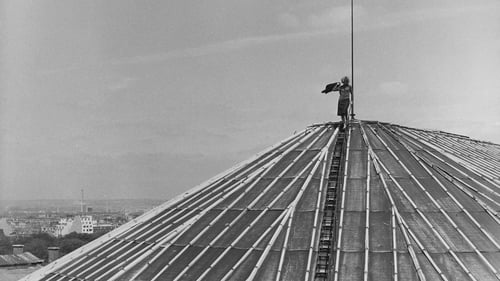
Self (uncredited)
Candid interviews of ordinary people on the meaning of happiness, an often amorphous and inarticulable notion that evokes more basic and fundamentally egalitarian ideals of self-betterment, prosperity, tolerance, economic opportunity, and freedom.

An avant-garde political satire that takes place in a mythical country in South America. The dictator has been replaced by a look-alike revolutionary, and the dictator's wife has been replaced by a robot.

Screenplay
An aimless young woman is sent home from school with nothing to do. Drifting through the streets of Paris, she comes across a variety of people.

Director
An aimless young woman is sent home from school with nothing to do. Drifting through the streets of Paris, she comes across a variety of people.
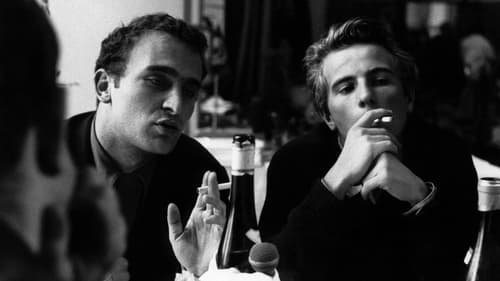
Himself
Paris, summer of 1960. Anthropologist and filmmaker Jean Rouch, along with sociologist and film critic Edgar Morin, both assisted by Marceline and Nadine, roam the crowded streets asking ordinary people how they deal with the misfortunes of life. Are you happy? But their real purpose is to find out if people can speak sincerely in front of a camera and how they react when they are later invited to analyze the meaning of their answers.

Writer
Paris, summer of 1960. Anthropologist and filmmaker Jean Rouch, along with sociologist and film critic Edgar Morin, both assisted by Marceline and Nadine, roam the crowded streets asking ordinary people how they deal with the misfortunes of life. Are you happy? But their real purpose is to find out if people can speak sincerely in front of a camera and how they react when they are later invited to analyze the meaning of their answers.

Director
Paris, summer of 1960. Anthropologist and filmmaker Jean Rouch, along with sociologist and film critic Edgar Morin, both assisted by Marceline and Nadine, roam the crowded streets asking ordinary people how they deal with the misfortunes of life. Are you happy? But their real purpose is to find out if people can speak sincerely in front of a camera and how they react when they are later invited to analyze the meaning of their answers.

Writer
Jean Rouch gives a group of black and white teenagers a "what if" question: what if they socialised with each other? The teenagers then improvise their own characters and situations.

Cinematography
Jean Rouch gives a group of black and white teenagers a "what if" question: what if they socialised with each other? The teenagers then improvise their own characters and situations.

Director
Jean Rouch gives a group of black and white teenagers a "what if" question: what if they socialised with each other? The teenagers then improvise their own characters and situations.

Director
A woman's funeral in Ghana.

A compilation of black and white excerpts from five previous color films by Jean Rouch: Yenendi, the Rainmakers, Cemeteries in the Cliff, The Millet People, The Circumcision, Battle on the Great River.

Director
A compilation of black and white excerpts from five previous color films by Jean Rouch: Yenendi, the Rainmakers, Cemeteries in the Cliff, The Millet People, The Circumcision, Battle on the Great River.

Director
Funeral rituals for the traditional leader Moro Naba of the Mossi at Ougadougou, Upper Volta (now Burkina Faso). Election ceremonies for his successor. Preparing the feast for the end of mourning. Ceremony in the palace, the people of Ougadougou, the warriors in traditional dress.

Producer
Winner of the prestigious Prix Louis Delluc in 1958, "Moi, un noir" marked Jean Rouch's break with traditional ethnography, and his embrace of the collaborative and improvisatory strategies he called "shared ethnography" and "ethnofiction". The film depicts an ordinary week in the lives of men and women from Niger who have migrated to Abidjan, Côte d'Ivoire for work.

Writer
Winner of the prestigious Prix Louis Delluc in 1958, "Moi, un noir" marked Jean Rouch's break with traditional ethnography, and his embrace of the collaborative and improvisatory strategies he called "shared ethnography" and "ethnofiction". The film depicts an ordinary week in the lives of men and women from Niger who have migrated to Abidjan, Côte d'Ivoire for work.

Director
Winner of the prestigious Prix Louis Delluc in 1958, "Moi, un noir" marked Jean Rouch's break with traditional ethnography, and his embrace of the collaborative and improvisatory strategies he called "shared ethnography" and "ethnofiction". The film depicts an ordinary week in the lives of men and women from Niger who have migrated to Abidjan, Côte d'Ivoire for work.

Director
Shows independence festivities in Ghana, formerly the Gold Coast, which on 6th March had become the first African colony to gain independence.
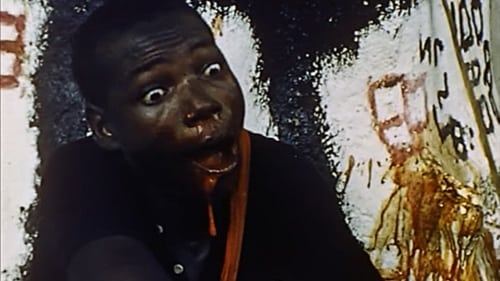
Cinematography
The subject of the film was the Hauka movement. The Hauka movement consisted of mimicry and dancing to become possessed by French Colonial administrators. The participants performed the same elaborate military ceremonies of their colonial occupiers, but in more of a trance than true recreation.

Narrator
The subject of the film was the Hauka movement. The Hauka movement consisted of mimicry and dancing to become possessed by French Colonial administrators. The participants performed the same elaborate military ceremonies of their colonial occupiers, but in more of a trance than true recreation.

Director
The subject of the film was the Hauka movement. The Hauka movement consisted of mimicry and dancing to become possessed by French Colonial administrators. The participants performed the same elaborate military ceremonies of their colonial occupiers, but in more of a trance than true recreation.

Cinematography
"Mammy Water" is mother sea, source of food. Jean Rouch filmed this short documentary in the Gulf of Guinea, in Ghana, where is held a colorful festival, the Chama, in which the participants offer cassava, gin and tobacco to the spirits of water and sacrifice a white ox to thank them and express their gratitude and respect.

Producer
"Mammy Water" is mother sea, source of food. Jean Rouch filmed this short documentary in the Gulf of Guinea, in Ghana, where is held a colorful festival, the Chama, in which the participants offer cassava, gin and tobacco to the spirits of water and sacrifice a white ox to thank them and express their gratitude and respect.

Writer
"Mammy Water" is mother sea, source of food. Jean Rouch filmed this short documentary in the Gulf of Guinea, in Ghana, where is held a colorful festival, the Chama, in which the participants offer cassava, gin and tobacco to the spirits of water and sacrifice a white ox to thank them and express their gratitude and respect.

Director
"Mammy Water" is mother sea, source of food. Jean Rouch filmed this short documentary in the Gulf of Guinea, in Ghana, where is held a colorful festival, the Chama, in which the participants offer cassava, gin and tobacco to the spirits of water and sacrifice a white ox to thank them and express their gratitude and respect.

Director
Rain rituals with possession dances among the Songhay and Zarma of Simiri, Zermaganda, Niger. Dry Season: The village of Simiri; water carriers, the rainbow tree. Possession of the faithful making their way to the spirits' hut on the seventh day of the seventh month of the dry season. All of the inhabitants of the village go to the spirits' hut to celebrate the Yenendi, the festival of the rain. Preparation by the musicians: under the shelter, gourd drummers. The chief of the village, old Wadi Sorko, prepares his violin. Dance of the "spirit" horse (possession dance).

Director
Funeral rituals among the Dogon on the cliggs of Bandiagara, Mali.

Director
In 1946 ethnographic researcher Rouch had attempted to film a "Bangaoui," a hippopotamus hunt along the river Niger, but the results were unsatisfactory.Five years later, he returns and makes the extra effort to get it right this time.

Cinematography
Rites and operation of the circumcision of thirty Songhai children on the Niger. Material of this film has been used to make "Les Fils de l'Eau".

Producer
Rites and operation of the circumcision of thirty Songhai children on the Niger. Material of this film has been used to make "Les Fils de l'Eau".

Director
Rites and operation of the circumcision of thirty Songhai children on the Niger. Material of this film has been used to make "Les Fils de l'Eau".

Director
Ritual of introduction, for a Songhaî young woman from Tillabérie, in Niger, to the dance of possession devoted to "Kirey", genie of thunder.

Director
In Wanzerbe, in Niger, caravans of Tuareg merchants and Bella arrive. On the market, food, potteries, salt, cotton, and flocks are exchanged... a Mossi magician prepares in his hut, from mille and tree barks that he collected in the bush, a magical spell to make bigger the women too thin. He practices divination with "cauries" and by tracing a geomantic theme on the ground. He sacrifices animals to the genie that guides him. During his collective celebration to protect the village against evil, a magician, representing the entire magician community, dances on the drum rhythms up to ecstasy. The leader of the village, the magicians, and the young boys attend the sacrifice yearly offered to the genie of the mountain, protector of the village.

Director
Rouch’s earliest surviving film, which depicts the Sorko of Niger on a hippopotamus hunt. - MoMA

Director
This documentary, which won the prestigious FIPRESCI award at the Venice Film Festival in 1979, follows the funeral rituals for a Dongo tribesman who died in Bandiagara in the mid-1970s. His death was especially significant, and the funeral correspondingly elaborate (taking many years to prepare), because he was born in 1849, and was well over 120 years old at the time of his death. Anthropologist Jean Rouch was especially notable for his anthropologically-informed African film features and for the many decades he spent training and encouraging African filmmakers. He was able to go into places that few had heard of, and even fewer were allowed to enter, in order to make memorable documentaries.












